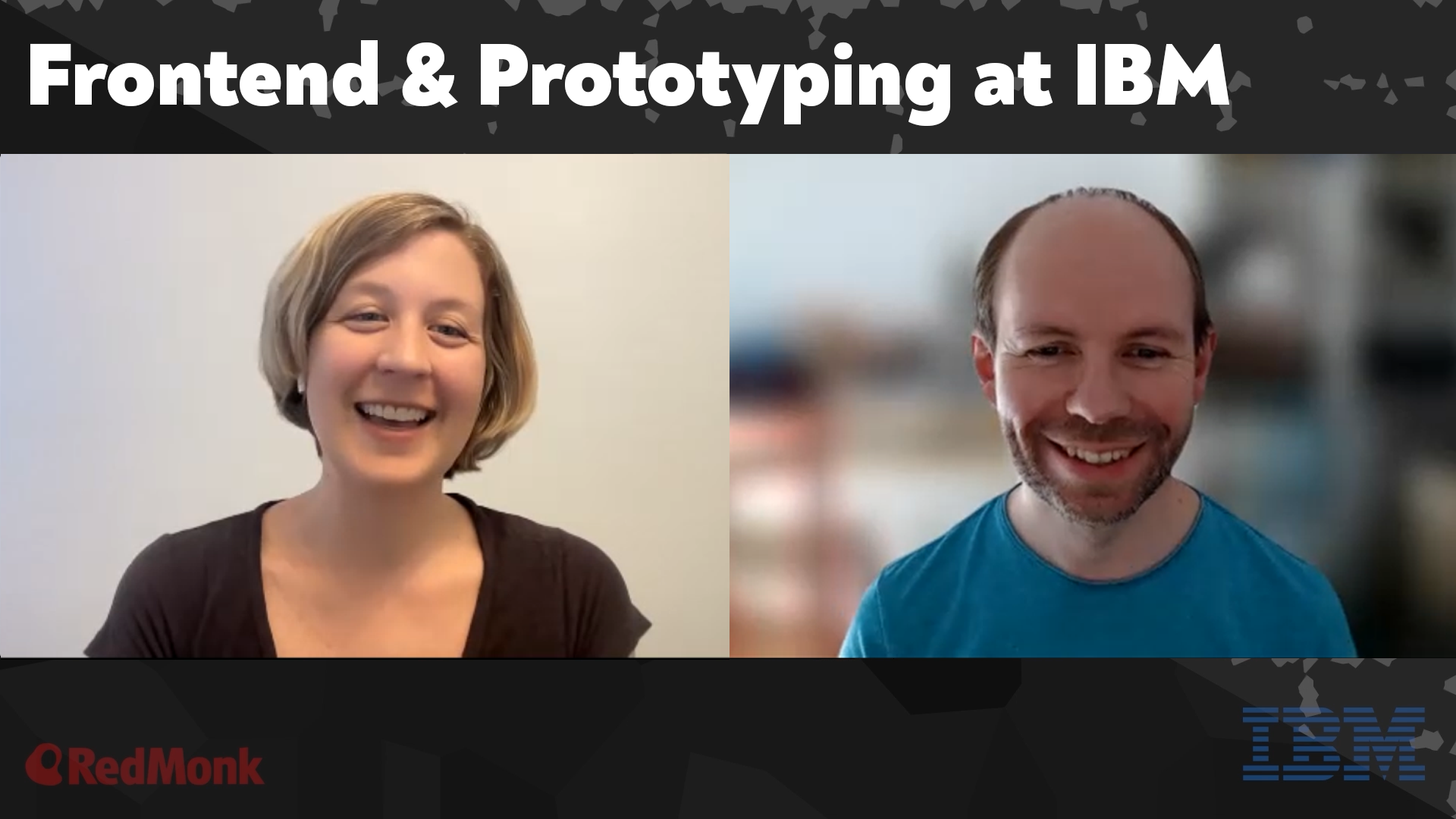It was my great privilege to speak with Stephane Rodet, UX Engineering Manager at IBM on the subject of Frontend engineering, design and user experience this summer for a video in our A RedMonk Conversation series. IBM has been doing some exciting work in this space, and you don’t have to take our word for it.
My conversation with Rodet casts IBM’s innovation-minded approach in stark relief as we cover a range of topics on the subject, beginning with a discussion of how he became interested in design after starting as a mainframe engineer:
so I started funnily as a backend developer on the mainframe. So I was actually building a component that managed the processing capacity and so on dynamically on the mainframe. So it was a very cool, super interesting topic. Far, far from the frontend, actually, but we had a desktop app that actually managed the software. And so I was assigned as the first assignment to actually test this desktop app. And so I opened so many tickets that for the next iteration, they put me on the frontend team and they were like, Stephane, no, you’re going to help fix this. And so we quickly moved to actually one of the first Web apps for the same management. So it was it was a new initiative that became the so called z/OS MF. So z/OS management facility was one of the first management system for the mainframe as a web app. So we were working with a very early, clunky kind of JavaScript tooling. So it was really interesting to see how it was installed.
And so after that I got asked to come on to one of the initial and first private cloud teams at IBM, and we’re working on the on the initial private cloud products around 2009. And so I got asked to help for the frontend. And so then we moved to bit we were then using Dojo for producing our app and this led me to become more and more interested in the UX topic. And actually at your conference, at the Monkigras conference, I listened to Phil Gilbert (Monki Gras 2014: Phil Gilbert on Recreating A Design Culture at Scale) explaining IBM design, and I also heard a lot about it internally. And what happened in parallel is that I started to meet the design community in my location. And we started building bonds and meeting regularly, and at some point one of the guys in the team got up and I came to the idea “What if we start our own studio?” And so this was how we started the story of a design at IBM Boeblingen (IBM R&D Germany).
We then spend some time clarifying professional terms by hashing out what differentiates the UX Engineer from Design Developers, Creative Developers, and Prototypers. Although Rodet jokes about there being, “so many names for a similar role,” he clarifies that significant differences separate them:
- UX Engineer & Design Developer: “Personally, I consider them very much like synonyms… They will be responsible for also prototyping with code for sometimes coding some interaction. Sometimes they will go and help the developers to understand … how to make a specific design happen. And sometimes they will also advise the designers on a specific technical matter, also to help them understand what’s possible, what’s not. Helping them with the domain knowledge also of the product.”
- Creative Developers: “will also play with new technology, sometimes IoT, for example, to come up with new concepts, new possibilities that might go way beyond what just, you know, what the designer in front of the screen will think about.”
- Prototyper: “a role that exists also in pure design. So you can be a prototyper without coding, you will be the person who puts the design together into scenarios, potentially designs, also some animation and interaction between them.”
With tooling and organizational changes accelerating, Rodet makes it clear how important it is to follow trends in frontend and design. Rodet explains how he is thinking through these professional shifts in the frontend space using Chris Coyier’s ideas from his landmark CSS Tricks article on the subject, “The Great Divide”, as a jumping off point. As Coyier explains:
The divide is between people who self-identify as a (or have the job title of) front-end developer, yet have divergent skill sets.
On one side, an army of developers whose interests, responsibilities, and skillsets are heavily revolved around JavaScript.
On the other, an army of developers whose interests, responsibilities, and skillsets are focused on other areas of the front end, like HTML, CSS, design, interaction, patterns, accessibility, etc.
When I was an FE engineer my skills lay firmly within Coyier’s latter category. I began with a focus on HTML and CSS, and gradually moved into doing more work in accessibility, QA, and CMS page builders (I love talking about page builders).
My conversation with Rodet will be of the greatest interest to folks looking to better understand the dynamic and growing frontend, design, and UX space. With the number of tools like Airtable, Figma, and Lottie entering the market and becoming more and more important to the stack, staying on top of professional trends and delineating roles is a must.
I’m grateful to Rodet for taking the time to share his ideas on the subject, and I look forward to following his continuing work at IBM. Let us know where you think the frontend space is heading in the comments or find us on twitter: @kateholterhoff @rodet.
Disclosure: IBM is a RedMonk client.
